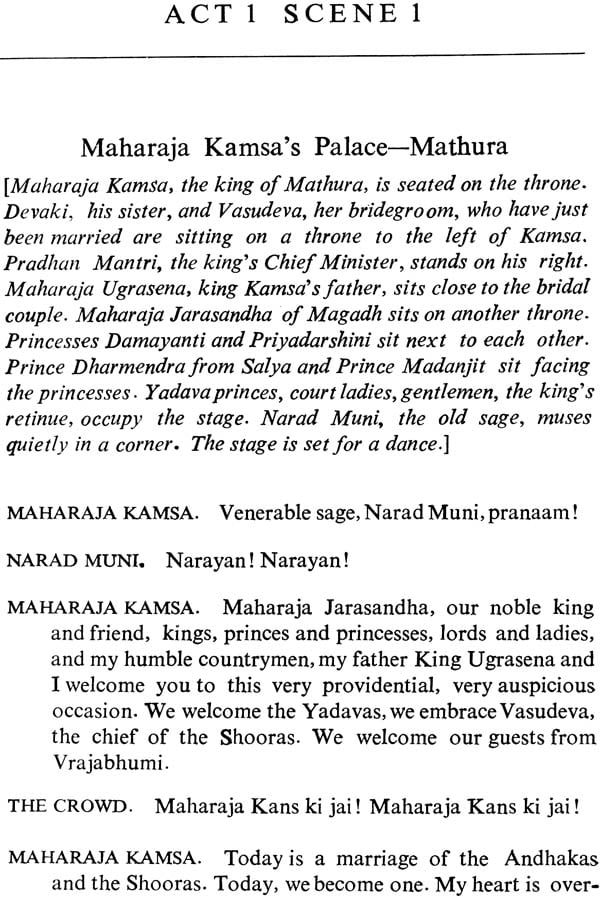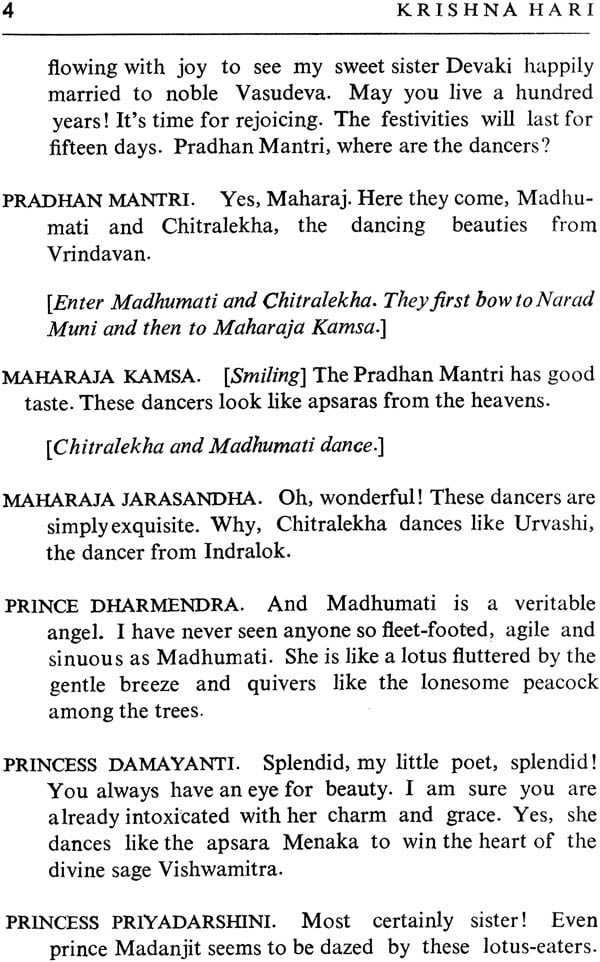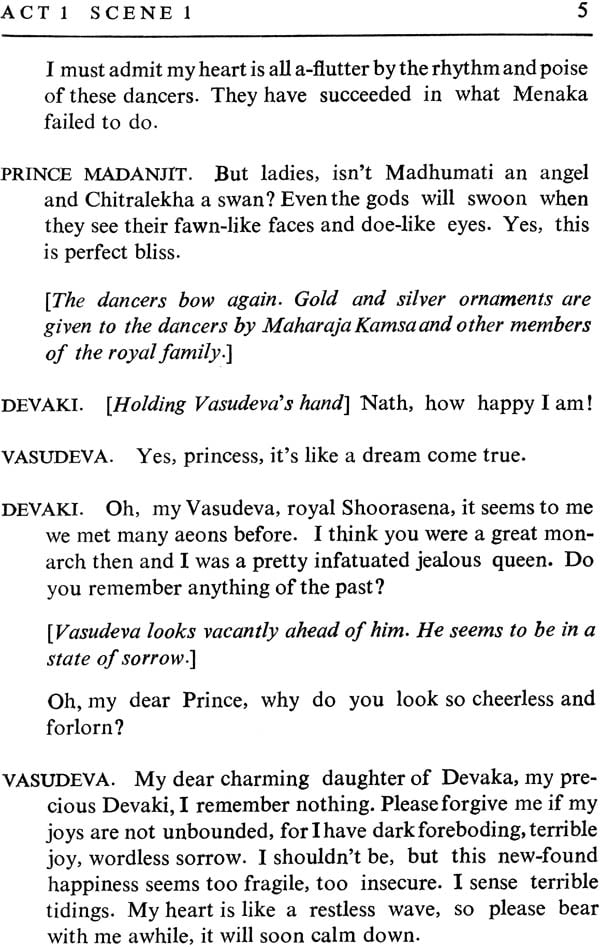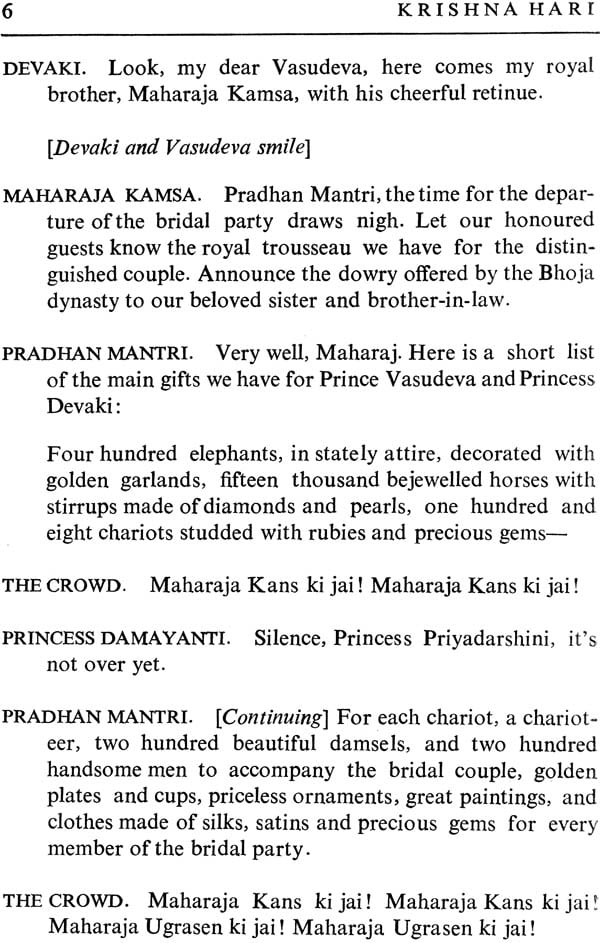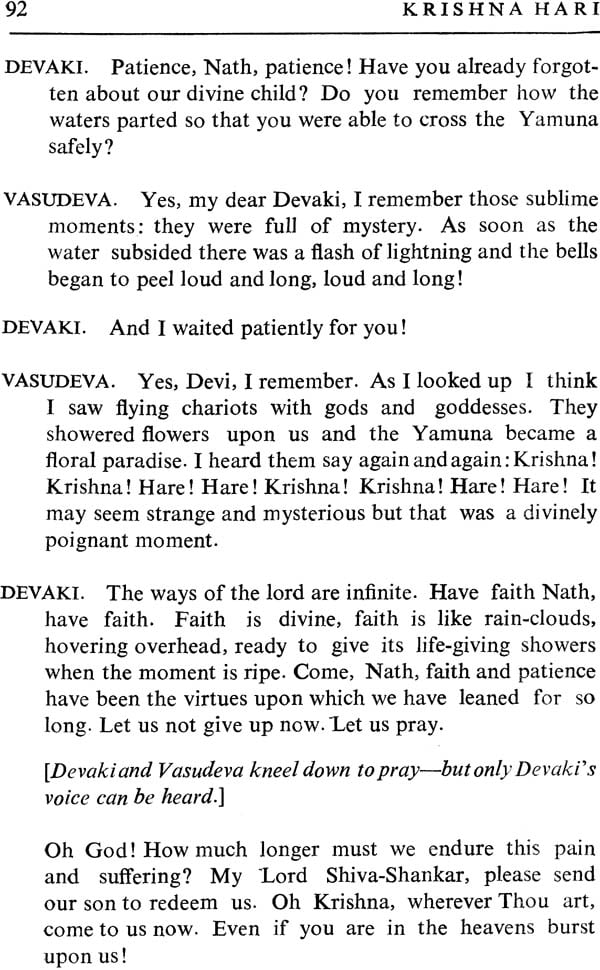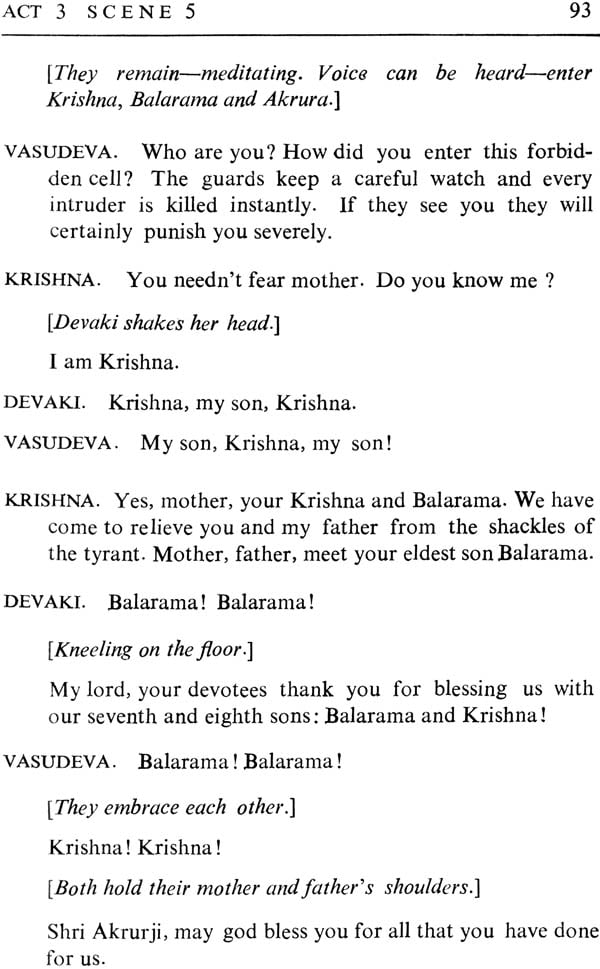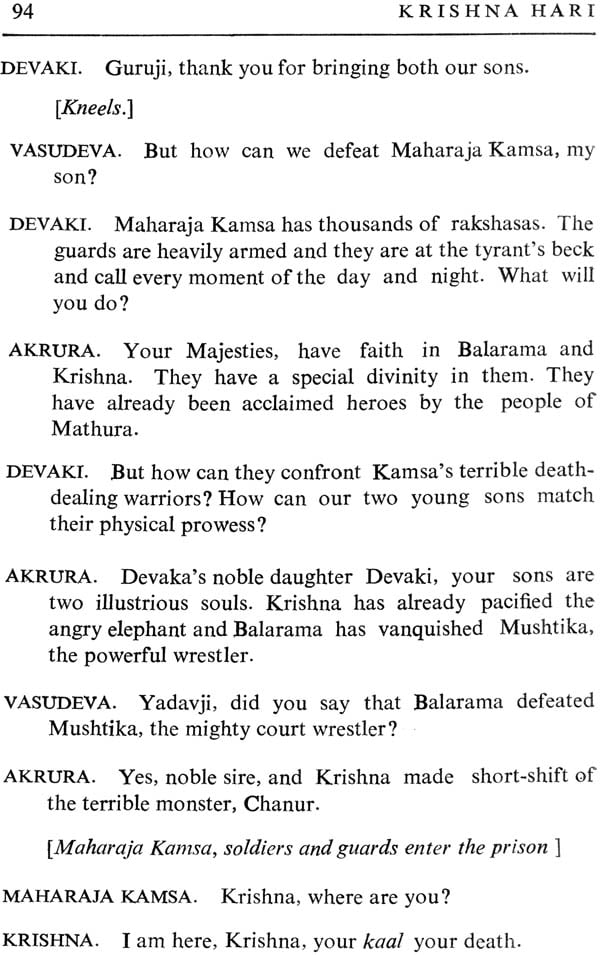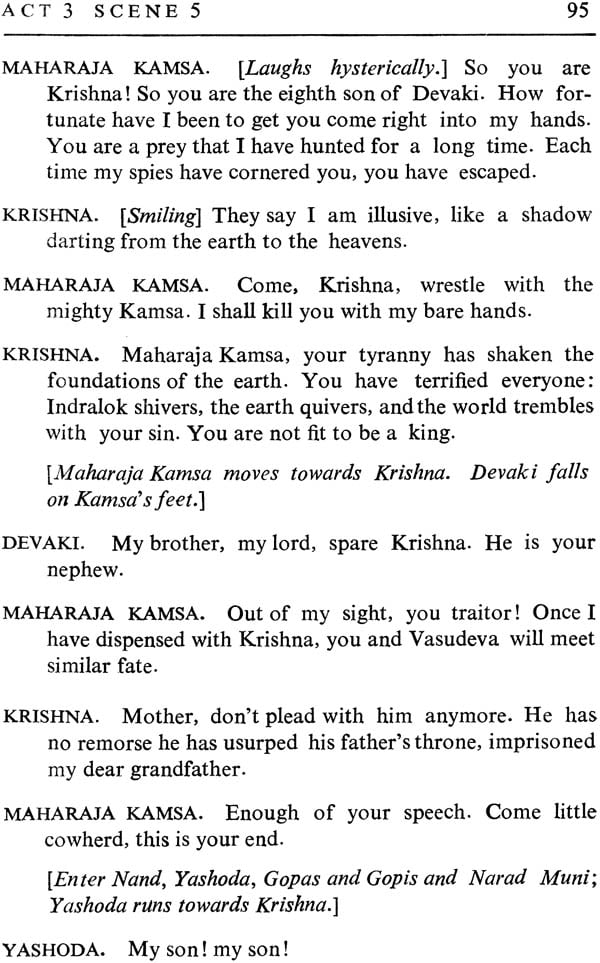
Krishna Hari: A Play
Book Specification
| Item Code: | NAB361 |
| Author: | Nandlal Tulsiram |
| Publisher: | Motilal Banarsidass Publishers Pvt. Ltd. |
| Language: | English |
| Edition: | 1992 |
| ISBN: | 8120810376 |
| Pages: | 113 (5 Color Illustrations) |
| Cover: | Hardcover |
| Other Details | 9.0 inch X 6.0 inch |
| Weight | 350 gm |
Book Description
The book is a dramatic presentation in Three Acts of one of the most significant episodes of Shrimad Bhagavatam the birth of Lord Krishna. It is a story about the atrocities committed by King Kamsa and his subsequent fall and death by Krishna.
Act One deals with the tragic fate of devaki and Vasudeva, Krishna's parents, and their incarceration into prison.
Act Two is a joyous account of Krishna's early childhood, his divine powers, and his amorous and divine relationship with the Gopis and Radha.
Act Three sees the culmination of the divine prophecy, and the death of Kamsa.
Nandlal Tulsiram, a Canadian citizen, whose ancestors left India a century ago, was born in South Africa in 1926. He studied in South Africa and at Carleton University in Canada. He taught English language, literature and linguistics at schools, colleges and universities in six countries for thirty-seven years.
Now retired, the author spends his time travelling, writing and delivering lectures on various social and religious topics. He has written, produced and directed many plays on Indian and African themes. Apart from his numerous productions he wrote and produced Krishna Hari and With Love From Luangwa for the Festival of Zambia Theatre Arts. He also wrote, produced and directed Scenes from the Ramayana at the University of Tripoli, Libya. He has written several papers on Hindu religion and philosophy and is now working on the 'Poetic Imagery of Tulasidasa's Ramacharitamanasa'. He has most recently written a paper on 'Mahatma Gandhi in South Africa' and is planning to write a novelette soon.
Krishna Hari, one of the most readable plays ever written on the themes of Kamsa's atrocities and the birth of Krishna, reveals the mastery the dramatist has of Indian mythological materials. His knowledge of Indian scriptures, especially of Shrimad Bhagavatam, is both extensive and deep, one of the most welcome fruits of which is the display, a dramatization of one of the most important episodes in what is one of the greatest of the Hindu Puranas. That the play is enormously stageable will be apparent to every reader.
Tulsiram, its author, is a familier name in Africa-it's a name associated with the production of more than a score of plays centring around diverse themes, mostly culled from Indian mythology and tradition. Report goes that every member of the audience has appreciated Tulsiram's plays, his dialogues, his technique and art of characterization, his natural- ism and realism and his profound knowledge of the dramatic art. In so far as Krishna Had is concerned, it is remarkable for its pithy dialogues and crisp, lively sentences decorously suited to the characters, matching their character and personality. As he has already produced and directed no less than twenty-four plays, Tulsiram knows the taste of his audiences as he also knows what the stage requirements indeed are. There- fore, there are no loose ends here; instead, we have a well-knit plot, skilfully engineered and possessed of a remarkable organic unity in the Aristotelian sense of the term. The author writes with a commendable ease bordering on spontaneity and con- summate expertise. The book, I am sure, will be popular and readily welcome for its readability, interesting themes, and dramatic art. Those who are interested in getting a firsthand information about one of the most significant episodes of the Shrimad Bhagavatam, its symbolically charged meaning, and its spiritual significance, will find in this play a remarkable contribution, in fact, the only dramatic contribution ever made in English. Therefore, I would recommend it to all lovers of English drama.
| Acknowledgements | vii | |
| Foreword | ix | |
| Characters | xiii | |
| Act 1 | ||
| Scene 1 | Maharaja Kamsa's Palace--Mathura | 3 |
| Scene 2 | At the Foot of the Himalayas | 11 |
| Scene 3 | Prison in Mathura | 16 |
| Scene 4 | Prison in Mathura | 21 |
| Act 2 | ||
| Scene 1 | Nand and Yashoda's Abode-Gokula | 27 |
| Scene 2 | Nand and Yashoda's Abode-Gokula | 33 |
| Scene 3 | Nand and Yashoda's Abode-The Courtyard: Gokula | 38 |
| Scene 4 | Along the Banks of the Yamuna-Vrindavan | 45 |
| Scene 5 | Nand and Yashoda's Abode-The Courtyard: Vrindavan | 52 |
| Act 3 | ||
| Scene 1 | Along the Banks of the Yamuna-Mathura | 65 |
| Scene 2 | A Street Scene-Mathura | 70 |
| Scene 3 | Dhanuryajna-The Secred Bow Festival: The Sacrificial Arena | 78 |
| Scene 4 | The Wrestling Tournament-The Wrestling Arena | 83 |
| Scene 5 | Prison-Mathura | 91 |
| Glossary | 99 |
